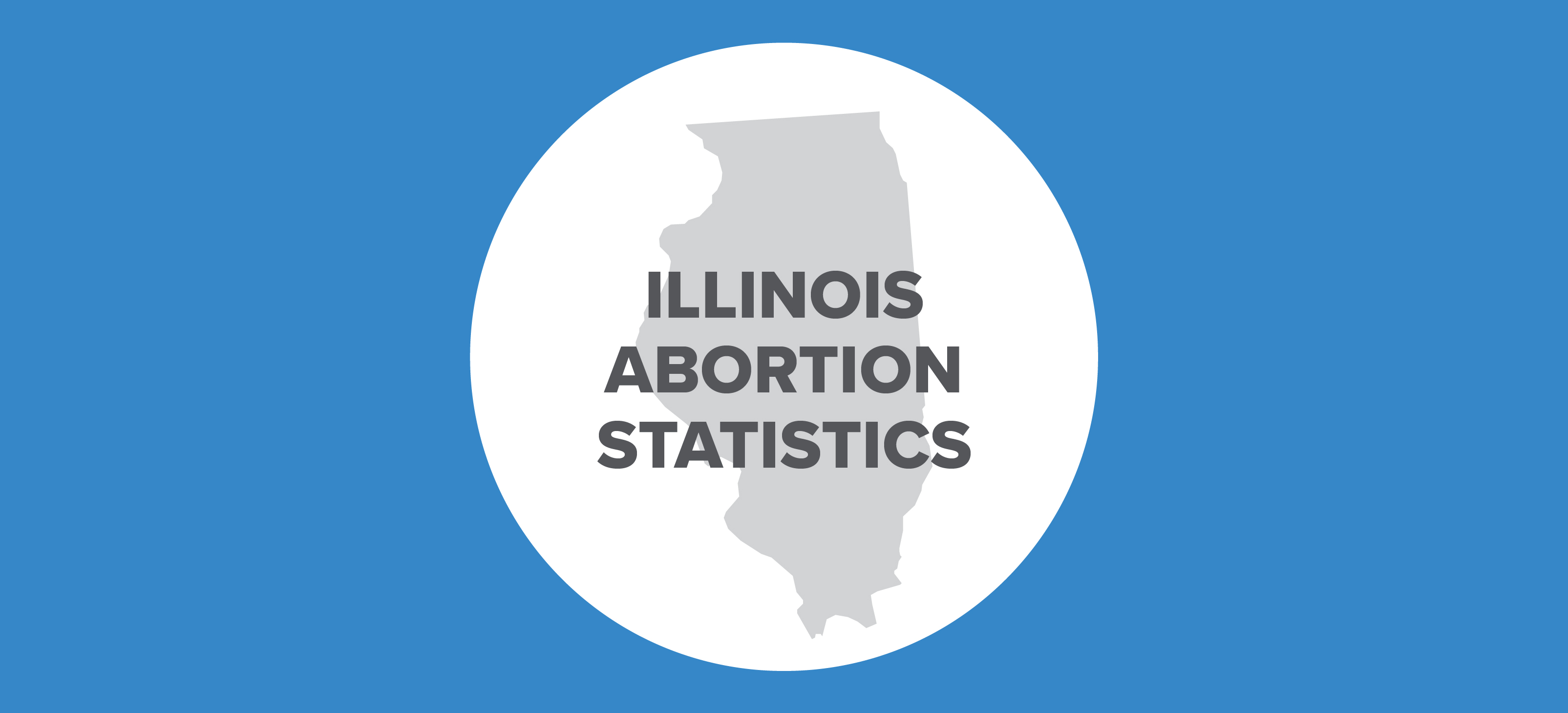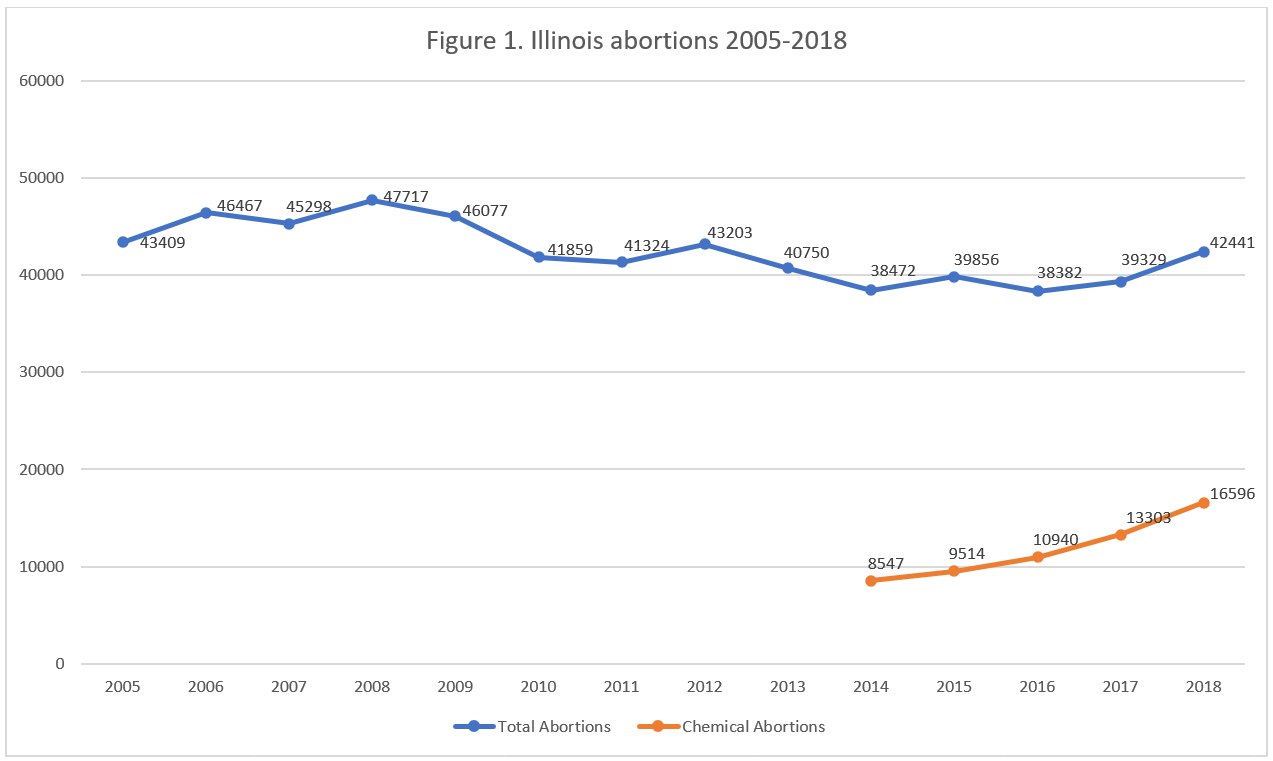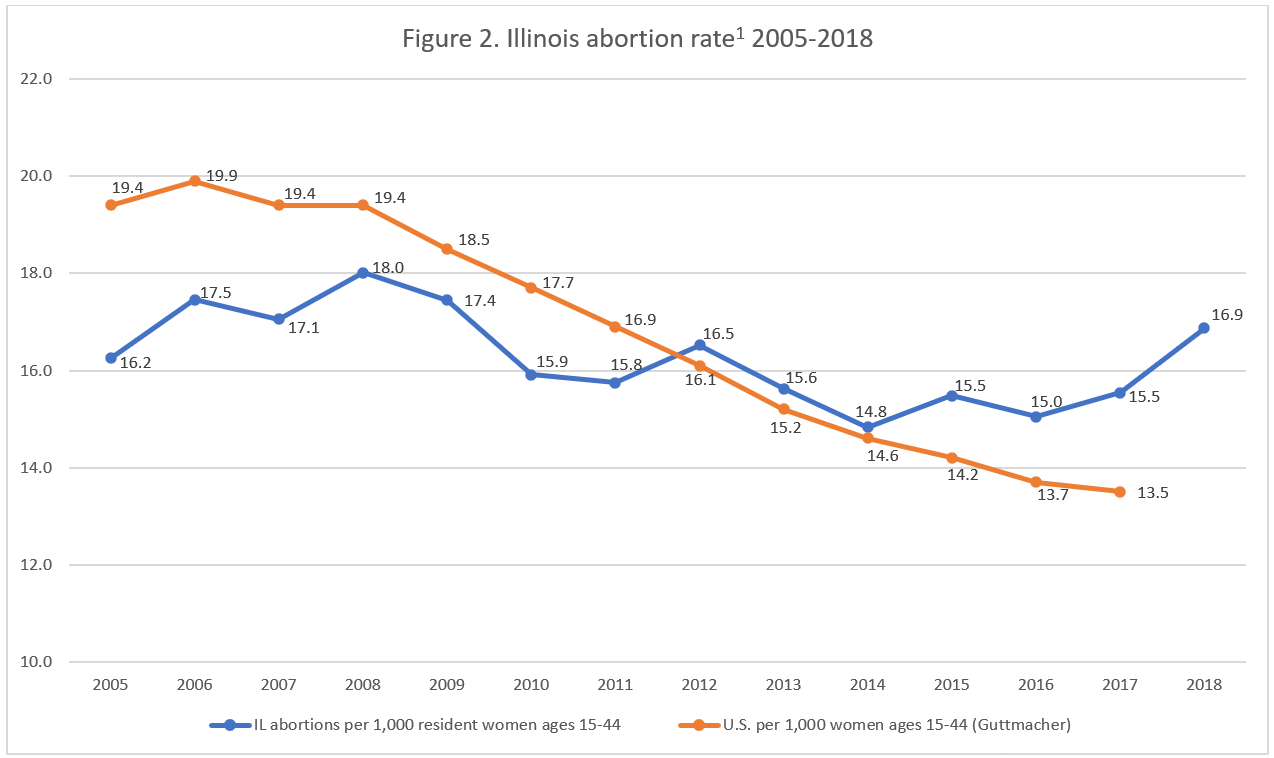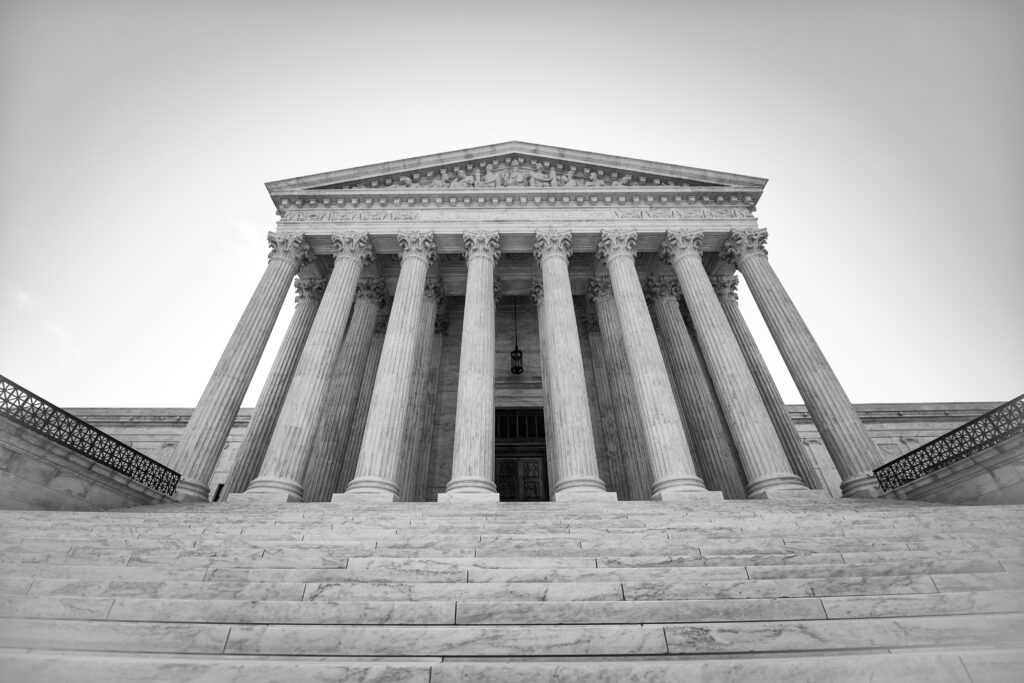Abortion Reporting: Illinois (2018)

Illinois’ abortion report for 2018 showed that abortions increased for the second year in a row, reaching the highest annual total since 2012. The report was released in January 2020 by the Illinois Department of Public Health.
Changes in Illinois Abortions, 2017-2018

Information on Planned Parenthood’s Illinois market share is not publicly available.
Abortion Totals and Trends
In 2018, there were 42,441 abortions reported in Illinois. This represents a decline of 19 percent from 1995, the first complete year of abortion reporting in Illinois, but an increase of eight percent from 2017 (Fig. 1). Chemical abortions also increased dramatically from the previous year, rising by 25 percent between 2017 and 2018. Chemical abortions made up 39 percent of all Illinois abortions in 2018. The Charlotte Lozier Institute estimates that Illinois’ abortion rate in 2018 was 16.9 abortions per 1,000 women of childbearing age, also up from the year prior and higher than the national rate (Fig. 2).
State Report Summary
Eighty-seven percent of the abortions reported in Illinois in 2018 were performed on Illinois residents. Thirteen percent were on women from other states, and just 60 abortions were on women of unknown residency. As part of its efforts to protect women’s privacy, Illinois suppresses any numbers that are 50 or less, as well as numbers greater than 50 that could be used to calculate smaller numbers. Illinois reports data points by women’s counties of residence, and due to these data suppression guidelines, much of the data for counties with few residents is suppressed. Illinois’ data suppression rules are stricter than most other states.
Information on the mother’s age was available for 99.8 percent of the abortions reported in Illinois, while information was suppressed for 0.2 percent of the abortions. Nine percent of the abortions were on girls under the age of 20, and 59 percent were on women in their twenties (with 29 percent on women ages 20 to 24 and 30 percent on women ages 25 to 29). Eighteen percent of the abortions were on women ages 30 to 34 and 10 percent on women ages 35 to 39, for a total of 28 percent on women in their thirties. Three percent were performed on women age 40 or older, and 0.3 percent were on women whose age was not reported.
Eighty-five percent of the abortions reported in Illinois were performed on unmarried women, compared to 10 percent on married women. Marital status was unknown for five percent of the women undergoing abortions in Illinois and suppressed for 0.1 percent of the abortions.
More abortion procedures were reported to have been performed in Illinois (42,520) than total abortions (42,441), even though data was suppressed for some less-common abortion methods such as hysterectomy and intra-uterine instillation. This is likely because Illinois allows abortion providers to report secondary abortion methods in addition to the primary procedure. There were 16,596 abortions that were known to have been induced using antiprogestins such as mifepristone (chemical abortions), although the actual number was probably slightly higher because the number of chemical abortions performed on women of unknown residency was suppressed.
Gestational age was suppressed for 0.3 percent of the abortions occurring in Illinois, including all abortions performed earlier than four weeks and later than 23 weeks of gestation. Forty-eight percent of the abortions were performed between four and seven weeks of gestation. Thirty-three percent occurred between eight and 11 weeks, dropping to 10 percent between 12 and 15 weeks and four percent between 16 and 19 weeks. There were at least 664 late-term abortions (1.6 percent) performed between 20 and 23 weeks of gestation, up from 255 the year before. Three percent of the abortions were performed at unreported gestational ages.
Illinois reports include important information on women’s pregnancy history, complications caused by abortion, the types of facilities where abortions occur, and the reasons abortions are performed. However, due to data suppression rules, much of this information is suppressed.
Increasing Illinois Abortions
2018 marked the first full year after Illinois enacted a bill expanding taxpayer funding of abortion. Between January and June 2018, there were 1,561 publicly funded abortions performed in Illinois, up from 84 state-funded abortions from January to June 2017. The increase in funding may have contributed to the overall rise in abortions between 2017 and 2018. More women traveling from Missouri due to unsafe conditions and licensing troubles at Missouri abortion centers may also have accounted for the increase.
Illinois’ 2019 abortion report may also show an increase: in 2019, Illinois enacted its extreme Reproductive Health Act, removing regulations on abortion – including protections for babies who survive abortions and prohibitions on partial-birth abortion, although the federal laws remain in effect – and eliminating most restrictions on abortion at any point in pregnancy. Additionally, in late 2019, Planned Parenthood announced the opening of a new 18,000-square-foot abortion center in southern Illinois, designed to attract abortion business from women from Missouri.
State Ranking
In the Charlotte Lozier Institute’s survey of abortion reporting across the 50 states, Washington, D.C., and New York City, Illinois’ reports were ranked at 13th best. To produce more useable information, Illinois could consider revising its data suppression regimen or reformatting its report, for example by reporting some data points as a single statewide total rather than by residence status. Illinois could also include information on the methods of payment used to fund abortions occurring in the Land of Lincoln.


- Starting with the 2018 abortion reports, abortion rates are calculated by the Charlotte Lozier Institute to allow for easier state-to-state and year-to-year comparisons. Rates were calculated by CLI using population estimates from the United States Census Bureau. The rates were calculated using the following formula: (total number of abortions performed in Illinois ÷ number of resident women ages 15-44) x 1,000. Rates may differ slightly from previous CLI articles due to revised population estimates.




















